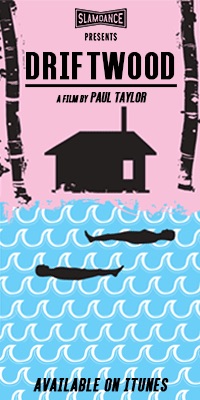Christian D. Bruun’s documentary, BLUE GOLD: AMERICAN JEANS, is a pretty classic version of a documentary that likely introduces you to a world you had no idea ever existed. The film looks at the literal history of blue jeans from their creation, the evolution of jeans as a wardrobe staple, and then a fashion sensation, and international presence, and finally, a highly coveted collectors item. It is that final focus of the documentary that is most surprising. The international business and pursuit of blue jean with astronomical amounts of money going back-and-forth, which is both fascinating and at time, just highly entertaining. Bruun successfully introduces the viewer to a world in a way that can’t help but change the appreciation you will have for that pair of Levi’s in your closet going forward.
1 You have produced and executive produced a number of documentaries, but this is the first feature-length film you have helmed yourself, yes? Why this subject and why take this step now, at this point in your career?
Yes. I have a very hands-on approach to filmmaking and I love the entire process — from writing to shooting to editing and color grading. Even in the films I produced, I usually had an active creative role, from story to cinematography to the look of picture. I used to direct commercials and always knew I wanted to direct my own movies. Documentaries are extremely hands-on. With Blue Gold, I enjoyed traveling around Japan with a camera and a lighting kit over my shoulder. At present I have two other documentaries in post-production. But my next film will be a narrative feature. I look forward to the collaborative process there and to shoot off a completed script!
2 Be honest here: Are you wearing jeans at this very moment? And if you are not, can explain yourself?
Hah! I am always wearing jeans now, almost 24/7. When I started making the film I only had one pair, and not even a very nice pair. But once I got sucked deep into the world of vintage jeans and salvaged denim, there was no turning back. Now I own about 30 pairs. I don’t collect jeans, I just keep them all on rotation.
3 The documentary serves as both a historical documentation of the creation and evolution of blue jeans, as well as a current day look at their impact/meaning on society and cultures around the world. Did the balance between those two themes change in the editing process from what you originally intended when you began the project?
Initially the film was to be about the vintage jeans world, from the Rose Bowl to Japan, and about how the stories imprinted in those old worn-out jeans find their way into the expensive fashion world. I filmed for about five years and as I got deeper into it, the stories and the political and cultural references were so fascinating that I decided to make it into a broader film. Growing up in Denmark, I was fascinated with the U.S., and I moved to Los Angeles in my 20s. In a way, all the things about the U.S. that I loved unfolded in the story of blue jeans, from cowboy movies to hip hop music. It made the film personal, something I hope you can feel especially towards the end of the film.
4 Were you aware of the depth and scope of the blue jeans collectors’ fervor as you began the documentary or did you learn that throughout the filming/interview process?
I had no idea, really. It wasn’t until that early morning at the Rose Bowl that I realized the craze surrounding vintage jeans. Who knew anybody would pay $1,500 to $100,000 for a pair of old dirty jeans? About three months after my first Rose Bowl pre-dawn experience, I was in Japan doing post on another film I was making and I took a train for about three hours to outside of Tokyo, to attend a jeans and American workwear auction. And there they were: everybody I had met in LA a few months earlier. This really gave me a sense of the international scope of the vintage jeans trade and the huge value of those old pants and in the stories that the stitches, details, and rips could tell.
5 How early did you have to get up to shoot the Rose Bowl Flea Market footage? And did you take advantage of being there so early to score some bargains yourself?
I had to get up at 3 am and drive to Pasadena in order to find parking, get in line, and try not to get trampled as the denim heads and jeans hunters pushed their way through the gates as soon as they opened. I was so fascinated and was busy filming that I never got the chance to buy any Blue Gold. Also, the real vintage collectors and denim freaks knew exactly what to look for and would find and grab them within seconds! Only later did I learn how to spot those valuable details.

You have to get up VERY EARLY in the morning to score these jeans at the Rose Bowl Flea Market (BLUE GOLD: AMERICAN JEANS)
6 Did working on BLUE GOLD change your perception or appreciation of blue jeans?
100%. I only owned one pair before I started making the movie and I didn’t know what to look for in jeans, or that there was much to look for. Now, I can appreciate all the work and attention to detail that goes into making a great pair of jeans. The way that the denim is woven determines how flexible the pants are. The various indigo techniques and dye treatments change how jeans fade over time. Every stitch is there for a purpose and the better the stitch, the better the jeans! Some designers spend an incredible amount of time perfecting this old American manufacturing tradition. They also push the tradition forward, inventing and developing new techniques to make jeans more comfortable, more durable, more sustainable.
7 Quick answer: Levis, Wranglers, or Lees?
My first pair in the 1970s was Wranglers with a huge cuff, but my answer today is Levi’s!
8 You scored interviews with such an impressive cross-section of designers and taste-makers, etc. around the world, was there an interview subject that you really wanted to get on camera but just proved too elusive for you?
Everybody wanted to be part of it. It is such a positive thing to most people and everybody has a jeans story. I would say a thing or two about the film and people would start telling me their own jeans stories. I was able to get most of the people we asked to be in the film. The short list of people who were too elusive include Ralph Lauren and Bruce Springsteen: very American, very iconic, and very busy.

If you don’t have to lay down on a special sofa just to be able to squeeze yourself into your jeans, then what is the point, really? (BLUE GOLD: AMERICAN JEANS)
9 Having watched the negotiations that went on between pickers and buyers and sellers and then re-sellers (which you caught on the film), do you look at the price we pay for stuff like this differently now?
Like all fashion and luxury items, the price does not always reflect the quality or the sincerity with which things are made. Some expensive jeans come off the exact same assembly line as inexpensive jeans. Depending on the label that gets put on the pants, the price ranges from $20 to $100 for the same pair of jeans. So, it is important to stay informed about how, where, and by whom things are made. There are a lot of designers who truly care about the quality of the jeans they design and produce, and how workers are treated. So paying more could in many cases get you a more conscientious product. Consumer awareness is very important to me and I hope the film can be part of a movement advancing transparency in the textile industry.
10 Popcorn or Candy?
Popcorn, anytime!
BLUE GOLD: AMERICAN JEANS is available on VOD.
US order link: http://apple.co/2lipHPZ
Canadian order link: http://apple.co/2oze4ky











READER COMMENTS